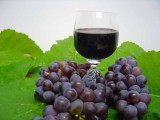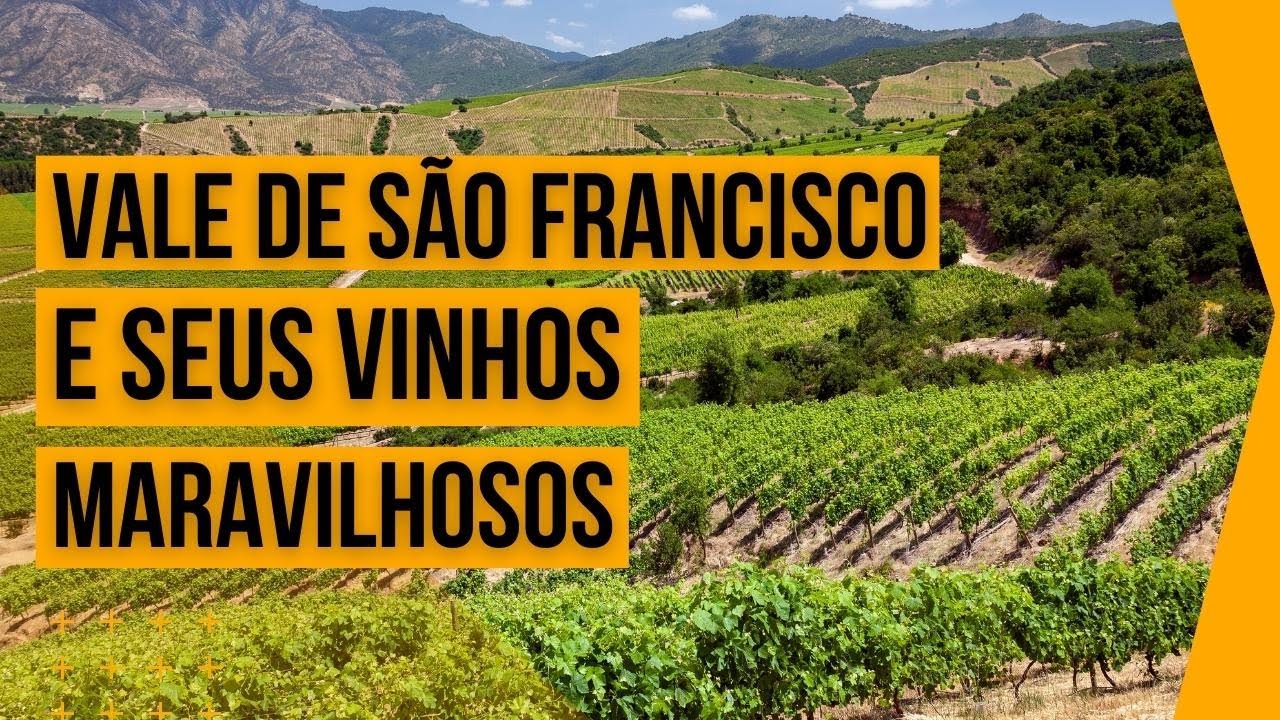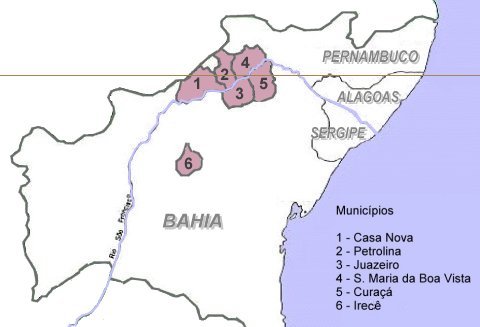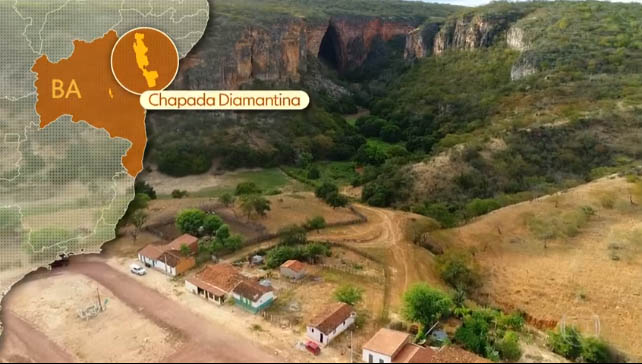Este post também está disponível em:
Português
English

In the São Francisco Valley it is possible to walk through the vineyards, participate in the grape harvest, learn about the preparation of wine and visit the place where the wine rests in large wooden barrels.
This route, which a few years ago was only possible in a few countries in Europe and in the south of the country, can now be done without leaving Bahia.
Located in the Vale do São Francisco, the second largest wine producing centre in the country, the city of Juazeiro offers wine and food tours for a diverse public, but who share a taste for the drink and the desire to get to know wine growing up close.
Combining wine tourism with the gastronomy of the sertão, the itinerary is the basis of a new tourist segment that is being worked on by the government of Bahia.
The target audience is open to novelties, a more demanding consumer and aware of the possibility of building their adventures and experiencing their own emotions, it is what the market calls the ‘dream society’, or dream society, a new wave of consumers who must put aside the ready-made packages to seek options more in line with their interests and requirements.
The intention of government agencies is to take advantage of the potential of the São Francisco Valley to promote a new tourist segment, based on enogastronomy.
More than two grape harvests a year in the São Francisco Valley
Fertile and sunny, with more than two grape harvests a year, the São Francisco region is the second largest wine centre in Brazil, responsible for 15% of national production.
It has the waters of the São Francisco and several natural attractions capable of seducing even more the tourist, already motivated by the charm of the vineyards and their wineries, the production process and the pleasure of tasting the wine in loco.
The richness of the typical gastronomy of the hinterland is another factor that will necessarily add value to the itineraries, as the drink requires harmonisation with the food.
Mutton and goat meat go very well with wine, remembering that there are great restaurants in Juazeiro. The Miolo winery in the city has a reception centre with a tasting room and a boutique for selling wines.
Videos “Wineries and History of Wine Growing in the São Francisco Valley”


Vinhos do Brasil - Vale do São Francisco25:49

Enocultura no Vale do São Francisco

Enoturismo - Vapor do Vinho

Enocultura e Vinicolas no Vale do São Francisco
1. History of grape and wine production in the São Francisco Valley
Grape and wine production in the São Francisco Valley, a story that begins in the 1960s.
Well before the São Francisco Valley consolidated itself as a centre for wine production, the southern region was already playing this role in Brazil.
In the 19th century, Rio Grande do Sul, even with unfavourable climatic conditions, came to be considered a growing pole in this area – and to this day it remains in the business.
However, the arrival of foreign immigrants in the country brought technical knowledge and a sense of the market, which meant that other Brazilian regions also showed their productive capacity.
The São Francisco Valley became known as a production centre in the 60s.
It was in the 1960s that the Northeast entered the scene and the São Francisco Valley began its trajectory in the production of grapes and wines, with the implantation of the first vines.
In 1963 and 1964, two experimental stations were installed in the municipalities of Petrolina, in the Sertão de Pernambuco and Juazeiro, in Bahia, where the Bebedouro Pilot Project and the Mandacaru Irrigated Perimeter would be implemented, respectively.
Despite the scarcity of rain, the hot and dry climate of the semi-arid region proved to be fertile ground for viticulture and, in the same decade, other cities in the Sertão of Pernambuco became part of the production chain.
The pioneering spirit of vitiviniculture in the Northeast is represented by the Sertão Pernambucano, which began its trajectory in vitiviniculture in the 1960s, producing base wines for vermouths in the city of Floresta, table grapes in Belém do São Francisco and Santa Maria da Boa vista, a place that at the time was called Coripós.
The strengthening of viticulture in the Vale do Submédio São Francisco took place with the installation of wineries at Fazenda Milano, in Santa Maria da Boa Vista – PE and Fazenda Ouro Verde, in Casa Nova, Bahia, which started to produce fine wines.
The installation of physical infrastructure, such as the construction of packing houses, improvements in the road and port system, and, above all, the organisation of producers into associations and cooperatives, played an important role in consolidating table grape exports from the São Francisco Submedium Valley.
Since the 2000s, production has been further strengthened with the establishment of other wineries and vineyards and also with public initiatives.
Governmental actions and teaching, research and innovation, from the year 2000, brought new technologies for the production and processing of grapes and the recognition of international actors. It was at this time that the Wine School of the Higher Technology Course in Viticulture and Oenology, of the Federal Institute of Sertão Pernambucano, was created.
Currently, the São Francisco Valley is home to the Botticelli winery in Santa Maria da Boa Vista (PE); the Bianchetti, Mandacaru and Terroir do São Francisco wineries, and the Rio Sol (Santa Maria) winery in Lagoa Grande (PE); the Quintas São Braz winery in Petrolina (PE); and the Terra Nova winery in Casa Nova (BA).
2. Wineries in the São Francisco Valley
Wineries in the regions of the São Francisco Valley, which encompasses Bahia and Pernambuco, and the regions of Morro do Chapéu and Mucugê.

In the municipalities of Casa Nova and Curaça, in Bahia, and Lagoa Grande, in Pernambuco, some wineries have emerged, with much expression already in the Brazilian and World market.
A region with mineral-rich soil and little organic matter, 3,100 hours of sunshine a year, well-defined seasons, and a bold project to irrigate the vineyards, with up to 2 and ½ harvests a year (or 5 harvests in two years).
A semi-arid climate that develops rain well in the first quarter of the year, and the winemakers and other members of the wineries, responsible for the production of the vineyards, manage to drive the vines to grant what they have of the best in the region.
All this systematically employed, ends up providing different micro and nano climates within the same vineyards, to the point of having different stages of maturation of the grapes. This is provided by extreme care and an incessant search by winemakers to print perfection and extract from it all the best essence that the berries can give us in the form of bottled poetry.
The well-defined harvests encompass the months of February to April, where grapes can be harvested for the production of younger wines and white wines, with well-defined production by the largest wineries in the region.
Between May and August, with milder temperatures and a greater temperature range, grapes can be harvested that will generate wines with higher quality and ripening projections, presenting a greater balance between acidity and sugars, being in this period that the wineries bet on the production of guard wines that present a greater consistency.
Finalising with the periods from October to December where there is a very sunny season, until the beginning of the rains of the first quarter, as we pointed out above.
The red grapes that stand out most in the São Francisco Valley region are Syrah and Tempranillo, which are also considered the most consistent in the world, due to the amount of reverastrol present in them. And, in relation to white grapes, the ones that stand out the most in the region are Chenin Blanc and Moscato Canelli.
In this region of the São Francisco Valley, we have five most outstanding wineries: Vinícola Botticelli, Vinícola Bianchetti, Vinícola Santa Maria / Rio Sol, Vinícola Terra Nova and Vinícola Vinum Sancti Benedictes.
Not all of them are located in Bahia, the main theme of this post, but as they are part of the wine tourism project of the São Francisco Valley, we found it interesting to comment on them in the publication.
2.1. Botticelli Winery
Founded in 1984, it currently produces about 1.5 million litres of wine per year, for the production of young wines and juices. The first industry in the region to produce wine and a pioneer in the Northeast in the cultivation of grapes for export, located at Fazenda Milano, Zona Rural, s/nº, Santa Maria da Boa Vista – PE.
It has a lot of resale to the USA and Europe, in addition to serving the market of Bahia and the region, planting mainly the varieties Cabernet Sauvignon, Petit Syrah, Chenin Blanc and Moscato Canelli.
Its production is of young wines, without much complexity and without passing through barrels. It currently has a project that involves some blends with the Cabernet Sauvignon, Tempranillo and Tannat varieties, which have some barrel passage. A still small production of this more special line, but worth tasting and seeking to know better these wines and this whole project.
2.2. Bianchetti Winery
The only one producing organic wines in the region, located on Estrada dos Vermelhos, s/nº, Zona Rural, Lagoa Grande-PE.
It produces the red grape varieties Cabernet Sauvignon, Petit Syrah, Barbera and Tempranillo in addition to the white grape varieties Sauvignon Blanc and Moscato. It produces sparkling wines, dry wines, soft wines and juices. Some examples are the sparkling wines Bianchetti Branco Brut, Moscatel Asti and Rosé Demi-Sec.
2.3. Terroir do São Francisco Winery – GARZIERA
Located at Sítio Gado Bravo, s/n – District of Vermelhos – Lagoa Grande – PE. It is the pioneer in wine tourism and in the production of natural grape juice.
The winery is producing only Sol do Sertão whole grape juice and sparkling wines, and visitation needs to be booked.
2.4. Winery Santa Maria – Rio Sol
The Rio Sol Winery, is located in the Municipality of Lagoa Grande – Pernambuco, having more than 120 hectares of cultivated vineyards, and carrying out two harvests per year of their vines.
They have a bold project developed together with Global Wines, a Portuguese group based in Dão, and where they produce high quality wines and sparkling wines that are exported to Brazil.
Within the Rio Sol line we have several sparkling wines and a bold (and delicious) project of sparkling popsicles. Very interesting and worth a visit to get to know closely everything that has been done in the region.
The white and red wines are made from various grape varieties, such as: Arinto, Viognier, Moscato Canelli, Cabernet Sauvignon, Syrah, Alicante Bousquet, Touriga Nacional and Aragonês, among others.
A remarkable wine from this winery is the one currently called Rio Sol Premium, which is made with 5 grape varieties: Cabernet Sauvignon, Syrah, Alicante Bousquet, Touriga Nacional and Aragonês, with 12 months in first use French oak barrels. This wine was initially named Paralelo 8, which represented exactly the location of the parallel where the Rio Sol Winery is located.
2.5. Terra Nova Winery – Miolo
In the Baiana part of the Valley, we have two very striking wineries with innovative projects. One with high technology, Terra Nova, one of the brands of the giant Miolo.
Located in the municipality of Casa Nova, Bahia, on the farm called Ouro Verde, it has more than 200 hectares of land planted with various grape varieties, with an annual production of more than 4 million litres of grape must, of which 2 million are destined for the production of wines and the rest for the production of juices, grappas and others.
Some of these plots that are part of the winery, have a special and differentiated condition, where grapes are grown that give rise to the admirable Syrah wine, Testardi, which means “stubborn”, in view of the stubbornness of the people who decided to bet on this terroir and believe that they could avenge great fruits of the region, as they really did.
From this specific terroir, whose name is Mandacaru, some wines from Miolo’s Single Vineyard line still come out, an extremely pleasant line with great potential to be tasted by admirers of good quality wines (learn more at the link below).
Another very important information about Miolo and all its vineyards: as reported by winemakers Letícia Fensterseifer and Marcelo Schuch, who are part of the Miolo group, and who dealt with this subject together with Winemakers Victor Ramos and João Carlos Ramos, who are creators of the sensational podcast project called sommbrothers.com.br , in its episode 12, that Miolo has just created 100% vegan wines, with a SO2 free seal, which was sponsored by Letícia.
Adriano Miolo’s idea for Leticia to look for a way to certify these Miolo products with vegan seals. Since 2004, the entire Miolo line has not used any type of animal product in the production of its wines.
And today, all the lines of the Miolo group, which involve: Miolo, Terra Nova, Almadén and Seival, have the seal of the VEGAN SOCIETY which is the company that holds the rights to issue the Vegan Seal certification to companies that have these projects.
In addition to all the beauty of this region, Miolo together with the State Government of Bahia and Pernambuco, as well as with the local Secretariats, implemented the VAPOR project which consists of rescuing the old steamboat that sailed the waters of the Velho Chico, with a tour on these boats as part of the wine tourism project in the São Francisco Valley region.
2.6. Winery Vinum Sancti Benedites
This winery, located in the municipality of Curaça, Bahia, is a project of a wine lover, Master José Figueiredo, who worked as a professional Sommelier for more than 30 years, being elected the best Sommelier in Brazil.
After retiring, he sought help from EMBRAPA to realise this magnificent and dreamy project, with wines of extreme quality and with a small wine tourism project within his Winery.
The owner develops a very interesting project, with local tasting, foot treading, night harvesting of his vineyards, and wines that are produced with great care, excelling in pressing and destemming manually.
The flagship of the project is VSB, a wine made with the Syrah, Touriga Nacional and Tannat varieties, in the 2017, 2018 and 2019 vintages.
There are still other grape varieties being grown at the winery, with the intention of launching new wines such as Sauvignon Blanc and other varietals soon.
3. Wineries in Morro do Chapéu and Mucugê
The newest viticulture projects in the state of Bahia are emerging here. In a marvellous region called Chapada Diamantina, we have some audacious projects such as Fazenda Progresso, Vinícola Vaz and Vinícola Reconvexo.

Located in municipalities that are between 900 and 1150 metres above sea level and with a climate and soil that resemble the Mendonza region in Argentina, it has its days very hot and its nights with milder and more pleasant temperatures.
Perfect climate for the production of beautiful wines, as expected by those who bet on this fantastic project.
3.1. VAZ Winery
Located in Morro do Chapéu, in Bahia, this winery is a project developed in an area of 20 hectares, where several grape varieties are planted such as: Pinot Noir, Cabernete Sauvignon, Malbec, Syrah, Cabernet Franc, Merlot, Chardonnay, Viognier, Sauvignon Blanc and Niagara.
It is an audacious project that involves the future construction of a condominium of houses, where they will have their own mini-vineyards in their backyards, and the owners will be able to learn to cultivate and produce their wines personally.
With production since 2015, when it had its first harvest, it began commercially selling its wines in the 2017 vintage. It produces Brut and Muscat sparkling wines, and Malbec, Syrah, and a blend of Malbec and Syrah reds.
3.2. Reconvexo Winery
A project by my friends João Carlos Ramos and Rafael Araújo, started in 2018, and with steps taken slowly and measuredly. It is wonderful and thoughtful, it is being articulated with a view to helping the local community, as well as cooperating in the development of the entire region.
Initially planting the Malbec and Syrah grape varieties, with the first harvest expected for 2020 and the start of production in 2021. Chardonnay is expected to be planted in October 2020, and other varieties for adaptability tests with the region’s climate and soil.
It is located in Morro do Chapéu in the Santa Úrsula Community, near Várzea da Onça.
It is a project of people engaged with the world of viticulture, scholars and researchers, who have many other projects linked to the world of wine. Surely a lot of good things will come from this winery.
It is also worth mentioning that it already has studies and projects for the development of wine tourism in the region, as well as, it is carrying out work in parallel with the production of artisanal goat cheeses with a Swiss cheesemaker who lives in Morro do Chapéu.
3.3. Fazenda Progresso
This Fazenda is a grandiose project, which involves planting various fruits, such as blackberries and strawberries, as well as very high quality coffee, exported to the Vatican, such as Latitude 13 Coffee, among other projects in the area of agriculture.
However, in the world of wine, the project is phenomenal, with the planting of several grape varieties, which are still kept secret: Sauvignon Blanc, Chardonnay, Syrah, Cabernet Sauvignon, Merlot, Cabernet Franc, Pinot Noir and Petit Verdot, among others.
Luckily, I had the pleasure of tasting one of their Sauvignon Blanc, in experimental phase, vintage 2017, with barrel passage, whose time was not informed, and I believe it was not more than 6 months.
The wine served blind had a complexity of aromas, flavours, acidity and balance that impressed everyone at the table. We were guided to France and it never crossed our minds to be a Brazilian wine, and even more so from Bahia.
It is a phenomenal job and I look forward to tasting their wines when they are ready.
The winery project also includes a top-notch restaurant with a private cellar, where their own labels will be served with haute cuisine.
Bahia.ws is the largest travel and tourism guide for Bahia, Salvador and the Northeast.



















